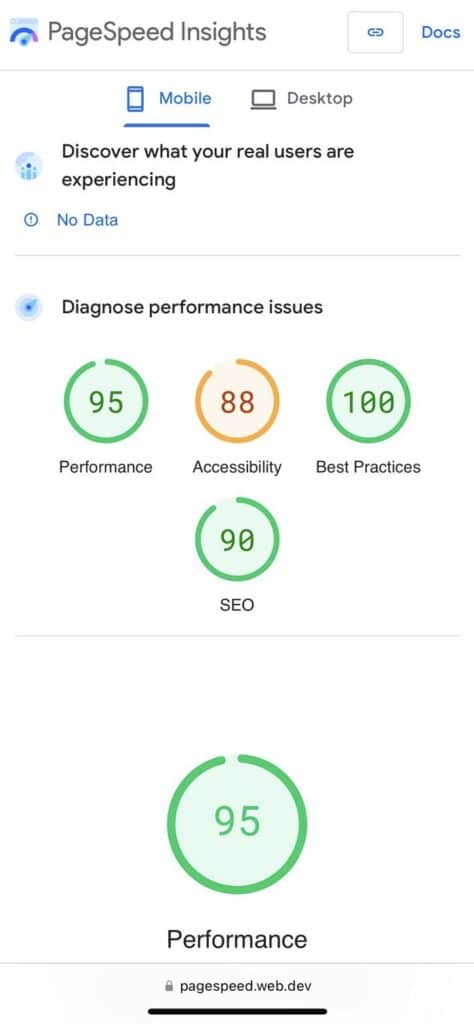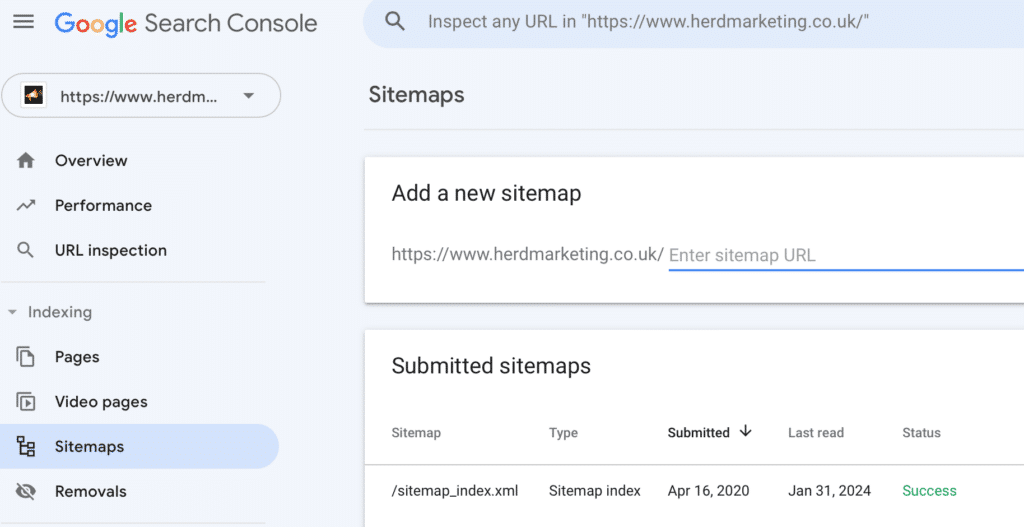The Importance of Technical SEO
 Reading Time: 8 minutes
Reading Time: 8 minutes
This article is the first in a four-part series that we will be creating that covers some of the fundamental parts of search engine optimisation. This week, we begin by looking at some of the most important aspects that make up technical SEO.
In the ever-evolving world of digital marketing, it is of paramount importance to keep your online presence at the forefront of your industry. Central to this is search engine optimisation (SEO), a process that involves optimising your website to increase visibility and attract organic search traffic. SEO is often subdivided into several categories, but one that can’t be overlooked is technical SEO.
This blog post will explore the role and significance of technical SEO in the broader context of website optimisation.
Table of Contents
Understanding the Basics of Technical SEO
Technical SEO mainly focuses on refining your website for the initial crawling and indexing stage, conducted by search engines like Google to understand and rank your site in their search results.
Although the content of your site is not the primary target in technical SEO, the concentration lies in optimising your site’s arcitecture. Effective implementation of technical SEO enables search engine bots to traverse and index your site more efficiently, subsequently helping to boost its rank in organic search results. It’s a crucial component of the wider spectrum of website optimisation, functioning coherently with other SEO practices to boost your online exposure. Hence, establishing a robust foundation in technical SEO is paramount to your site’s complete SEO strategy.
The Role of Mobile-Friendliness in SEO
The proliferation of mobile devices has reshaped the way users access the internet. In response to this seismic shift, Google has implemented mobile-first indexing, solidifying mobile-friendliness as a crucial aspect of SEO.
When a website is mobile-friendly, it’s designed to display and function correctly on smaller screens such as smartphones and tablets. This is not just about aesthetics, but also about creating an effortless user experience. If your website isn’t optimised for mobile devices, it could see a decline in its search rankings. This could severely impact your site’s visibility and your potential to attract organic traffic.
Therefore, integrating mobile-friendliness into your technical SEO approach is vital in safeguarding your ranking and enhancing your website’s visibility in the mobile-dominated digital landscape.
Importance of Website Speed in SEO
In the realm of technical SEO, one cannot ignore the critical role of website speed. The swiftness with which your pages load has a significant bearing on the user experience. Pages that take an excessive amount of time to load often lead to users abandoning the site prematurely, a phenomenon known as a high bounce rate. Google doesn’t take this lightly and considers page speed as a crucial ranking factor.
Thus, if your site is slow to load, it may drop in search engine results pages (SERPs), negatively impacting your visibility in organic search results. Therefore, by optimising the speed of your website, you can offer a superior user experience, helping to keep your bounce rate low, and potentially boost your position in SERPs.

Tools such as Google’s Page Speed Insights offer really good insights into both the strengths and weaknesses of your website from, a speed perspective. Furthermore, it also offers suggestions and help on how to fix any issues identified.
URL Structure and Its Role in SEO
The structure of a URL plays a critical role in technical SEO. It should be structured in such a way that it is easily understood by both search engine crawlers and human users. A URL’s structure offers a hint about the content of the page and its location within the overall hierarchy of the website. Incorporating relevant keywords into the URL is a valuable practice that can enhance your SEO efforts.
Search engine results display the URLs of each result, so a well-crafted, descriptive URL can be an enticing factor for users to click on your link. With this in mind, focusing on creating clear and keyword-rich URLs can significantly contribute to improving your website’s visibility and search ranking.
The Significance of XML Sitemaps for SEO
An XML sitemap acts as a crucial navigation tool for search engines such as Google, simplifying the crawling process across your website’s key pages. This aspect becomes significantly important when dealing with expansive websites containing a multitude of pages, or those with complex structures (such as large e-commerce sites). By delivering an easily interpretable layout of your site, XML sitemaps help guide search engines to locate and understand your crucial content effectively. They are essentially your website’s roadmap, paving the way for search engines to locate essential pages, even if the internal linking isn’t perfect.
Moreover, XML sitemaps go beyond just listing the pages of your site. They also provide useful metadata associated with these pages, offering details such as when the page was last updated, how often changes occur, and the relevance of the page in relation to other pages on your site. This additional information is incredibly useful to search engines, helping them to better understand and index your website.

You can submit your own website sitemap to Google via its Search Console.
Although XML sitemaps do not directly increase your site’s visibility, they do ensure that Google has an easier time finding your pages – an essential factor in the broader scope of SEO. Thus, while an XML sitemap might not boost your ranking overnight, it’s an essential technical SEO practice to ensure your site is fully comprehensible to search engines, thereby aiding your overall website optimisation efforts.
The Need for HTTPS in SEO
Having an HTTPS protocol for your website is an integral part of your technical SEO strategy. Essentially, HTTPS provides a secure connection for data transfers between a user’s device and the site, protecting against potential data breaches or cyber-attacks. This secure connection is symbolised by a padlock icon in the address bar, assuring users that their data is safe, which in turn builds trust and encourages more interaction with your site.
From an SEO perspective, Google rewards secure websites. It considers HTTPS as a ranking signal (and has done since c.2014), and sites without a secure protocol may be disadvantaged in the competitive landscape of search engine results pages. Not only does this have a direct impact on your visibility, but it also affects user behaviour. Internet users are becoming increasingly savvy about online safety. If your website lacks the padlock symbol, indicating it’s not secure, visitors may promptly leave – increasing your bounce rate and potentially harming your ranking further.
The HTTPS protocol is identified by the lock symbol in the address bar, as depicted below in a screenshot of our own website 👇

It is important to note that transitioning from HTTP to HTTPS should be done carefully. Incorrect implementation can lead to duplicate content, loss of back links or decreased page speed. Thus, it is advised to seek professional help or thoroughly research best practices before making the switch. However, the benefits of making your site secure definitely outweigh the potential challenges. It is a crucial element of technical SEO and not something to be overlooked in your website optimisation efforts.
How Structured Data Affects SEO
Structured data refers to a universally understood arrangement for classifying the content of a web page called Schema. This not only makes it easier for search engines like Google to grasp what your page is about, but it can also lead to enhancements in search results. Through structured data, certain features or enhancements can be activated, potentially increasing your visibility on the search engine results pages (SERPs).

This screenshot shows how structured data can appear in the SERP. This example is from the popular WordPress plugin Yoast, and it shows additional text below the meta description, incorporating ratings and votes. This will invertible help with things such as CTR for Yoast.
Consider structured data as a translator for your web page content. It communicates the specifics of your page’s content to the search engines in a language they understand. This can lead to rich results or snippets – eye-catching search results with additional details and visuals, which can improve click-through rates. Rich results are proven to be more engaging, thus leading to a higher click-through rate, more traffic, and ultimately, better ranking in SERPs.
Implementing structured data into your technical SEO strategy can play a significant role in improving your website’s online presence. It’s about creating a dialogue between your website and search engines, ensuring the latter can comprehend and display your content effectively. While it might seem complex, various tools are available online to generate structured data codes easily.
However, similar to the transition from HTTP to HTTPS, incorporating structured data requires careful execution. Missteps could lead to a search engine misunderstanding your page content, leading to decreased visibility. Therefore, it is advisable to conduct a thorough study or seek professional assistance when integrating structured data into your website. When done correctly, the potential improvements in your website’s search visibility make it a critical component of your technical SEO strategy.
Website Crawl Depth
The concept of crawl depth plays a significant role in technical SEO. Crawl depth refers to how deep a search engine spider will delve into your website’s architecture. Pages with a shallow crawl depth are just a few clicks away from the homepage, whilst those with a deep crawl depth require numerous clicks to reach. If your important content lies deep within your site, it can be more challenging for search engine bots to locate, potentially impacting your visibility on SERPs. Therefore, it is critical to structure your website so that the crucial content is easily accessible, optimising the chances of it being indexed by search engines. Simple navigation, effective internal linking, and a well-structured XML sitemap can all contribute to maintaining a favourable crawl depth.
Fix/Update Broken Links
Broken links, whether internal or external, can be detrimental to your website’s technical SEO. They lead to a ‘404 Page Not Found’ error, creating a roadblock for users and search engine spiders alike, negatively impacting user experience (UX). Search engines may interpret a website with numerous broken links as poorly maintained, which could adversely affect your website’s ranking in search results.
Similarly, users encountering these errors may choose to leave your site, contributing to a high bounce rate. Therefore, it is crucial to routinely check for and fix broken links. Various online tools can aid in identifying and correcting these broken links, helping to maintain the integrity of your website’s architecture and optimising the UX. Regularly monitoring and repairing broken links is an essential task in your technical SEO strategy, reinforcing the effectiveness of your website optimisation efforts.

